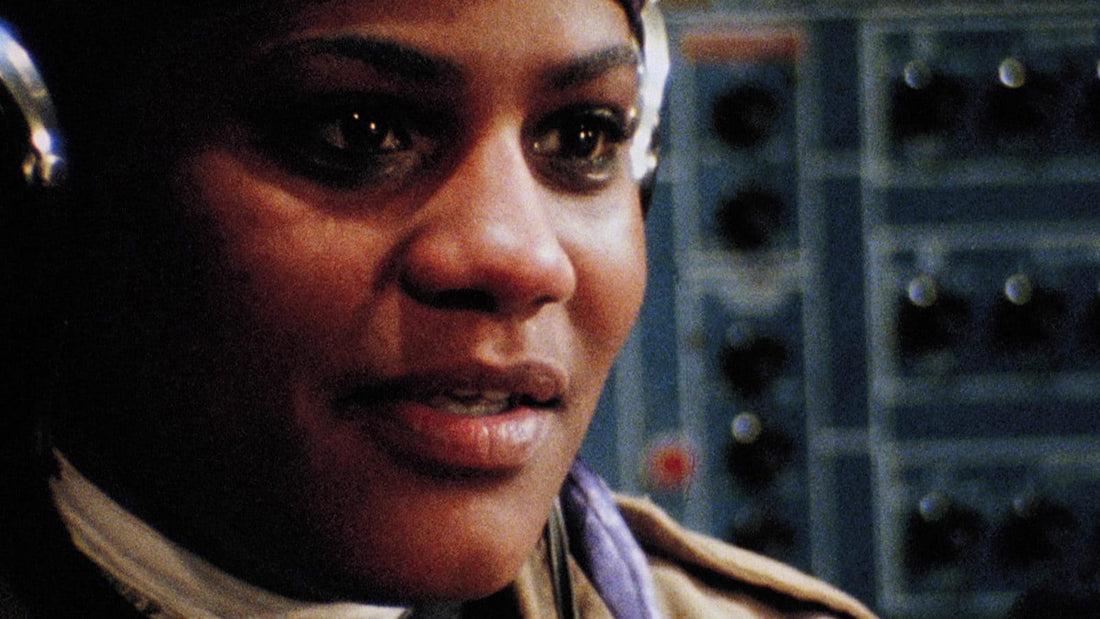In honour of Lizzie Borden’s birthday on February 3, Valentine Fabre looks back onto her second feature, Born In Flames, as maybe one of the most significant depictions of feminist rebellion.
“We have a right to violence. All oppressed people have a right to violence,” says civil right activist and feminist Florynce Kennedy in Lizzie Borden’s 1983 film Born In Flames. At a time where respectability politics have undermined the legitimacy of violence as a tool against oppression, the film subverted every expectation of what a social revolution could look like, while gaining unfortunate relevance as decades passed. Born In Flames established itself as a profoundly provocative piece of art that questioned the many facets of feminism, looking into its differences, layers and goals – making it, to this day, the quintessential feminist film.
Set in 1993, New York, ten years after a fictional Social-Democratic War of Liberation led to the establishment of a socialist government, Born In Flames follows two outspoken pirate radio hosts, Honey (played by the actress of the same name) and Isabel (Adele Bertei), as well as feminist activist Adelaide Norris (Jeanne Satterfield), head of the Women’s Army, whose actions amongst the community have made her the target of local enforcements. Throughout these women’s stories, the feature explores racism, heterosexism, classism, as well a generational divide, labour exploitation and the deceitful glimmer of a leftist government that still abides by the rules of capitalism. Developed over the course of five years, Born In Flames is the fruit of countless discussion groups initiated by Borden after her first feature, 1976’s Regrouping, was protested by the women it portrays and Borden eventually felt excluded from it. With this second project, the filmmaker specifically looked for Black voices in order to create an inclusive space, and oppose the typical white middle-class approach of the time that her previous film had carried.
Born In Flames explores two fundamental concepts that built feminism as we know it today: plurality and division. The former is embodied by a large scale of women, who, for most, were hired to play “both herself” and the representation of “a certain aspect of feminism within the fiction of the film” as explained by Borden for BOMB Magazine. Isabel represents the artistic white lesbian who believes in the power of sharing her music (“I've checked it out and we're doing enough in the community by putting out our music”) while Zella Wylie (Florynce Kennedy) exemplifies an older generation of Black feminists who carried a loud voice across the civil rights and Black Power movements of the ’60s and ’70s.
This concept of plurality brings up, perhaps, the most important theme of the film: division. Division is used not in a negative way, but to show the many layers and facets of feminism. The first and most obvious one remains the opposition between the governing and the governed: women as a class and the political class, primarily represented by white men, who “wouldn’t call [the Women’s Army] terrorists exactly” but yet would carry out extensive surveillance on their leader until her imprisonment, and death. Its other forms are spotted through various discussions, such as Norris trying to convince a friend to join the Army as to back the idea that community is primordial for women’s rights. In protest, the friend argues, “I don't wanna join the Army, I feel strong just as I am right now, I don't need no back-up. I don't want nobody backing me up.”
The idea of division is also conveyed visually through the juxtaposition of image and sound. Borden’s choice to overlay images of women carrying out domestic labour like taking care of babies, serving food to their husbands or folding laundry amongst other mundane daily activities works in contrast to the film’s main song ‘Born in Flames’ by the Red Crayola. The theme holds lyrics such as: “Into the darkness of the past / We’ve thrown thе shamans of the ruling class / The struggle of thе exploited mass / Has broken the oppressors' lash.”
At the same time, this exploration can be found in a divide of class and race, specifically through the lens of three white middle-class journalists at The Socialist Review who believe that the Women’s Army work is detrimental to the cause of women under the current Social Democracy in place, as “things are so much better now than they were before” – an assertion made by one of the writers while talking to Adelaide, whose job on a construction site was terminated with no notice. Born In Flames highlights those oppositions that still shape the feminist movement to this day, showcasing the idea that a revolution, as long as it carries radical and status-quo defying stances, can take many forms: community, violence, art, discussion, public disorder and protest.
Beyond those two questions, the legitimacy of violence is a recurring one that profoundly drives the film’s narrative. It eventually erupts with the explosion of a bomb on the top of one of the Twin Towers, in a grim anticipation of historical events. The Women’s Army is considered by some as the recycling of traditional masculine institutions (“Why is it called Women's Army? I thought armies were for the men”) – as if co-opting the lexicon of violence outside its white supremacist, capitalist and patriarchal context was inherently antithetical. It represents an active tool for feminism that finds power in concrete, and sometimes violent actions, more specifically towards the media.
Born In Flames explores the fractures of feminism, different waves and inconsistencies, to find its place within the movement. It is the testimony of decades upon decades of disagreement – indirectly leading, for example, to more recent debates around Barbie true feminist’s status. Borden’s film doesn't define women and feminist as homogenous categories, but rather portrays them as nuanced groups looking for a common liberation.
